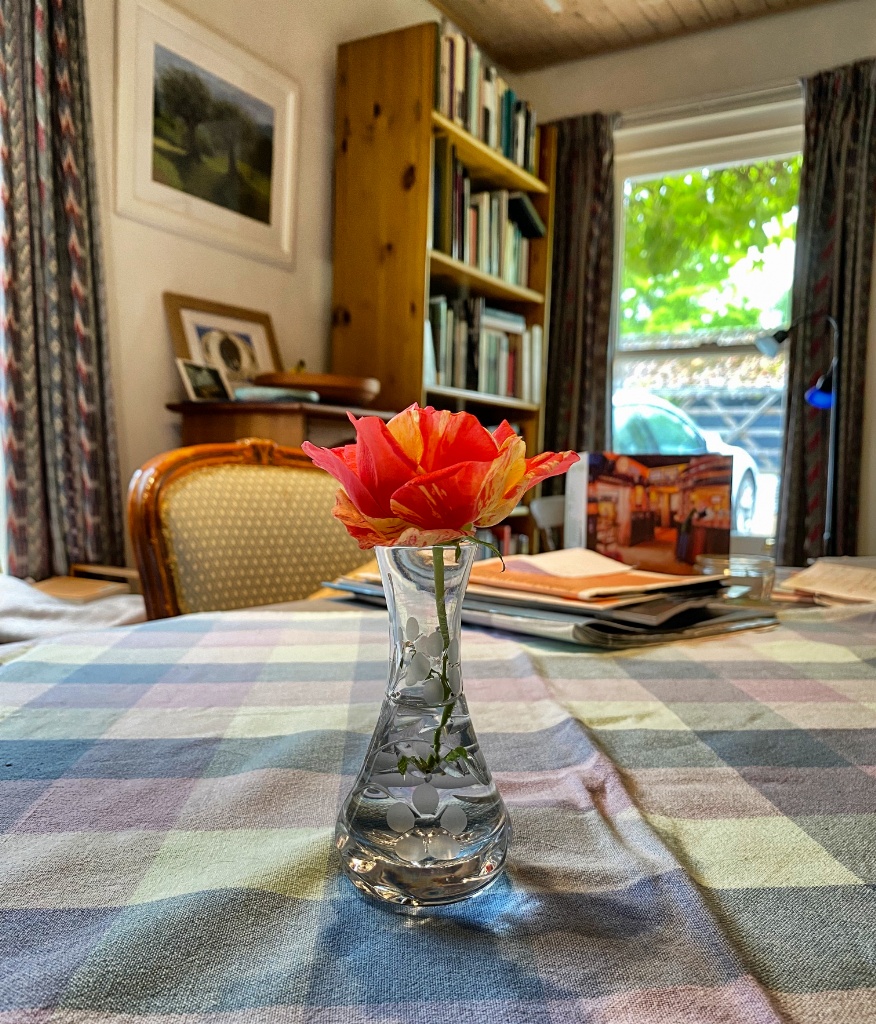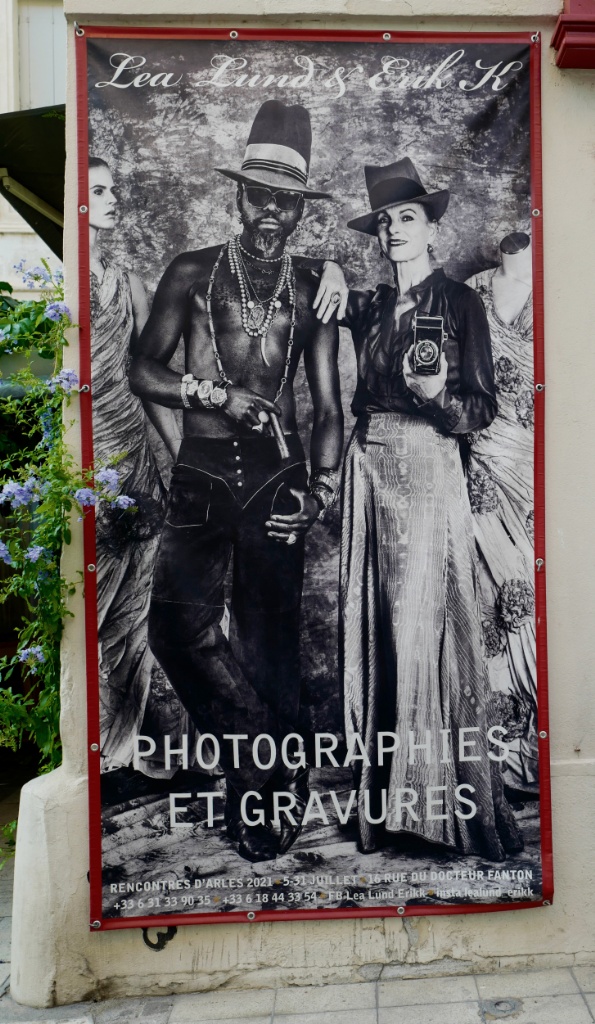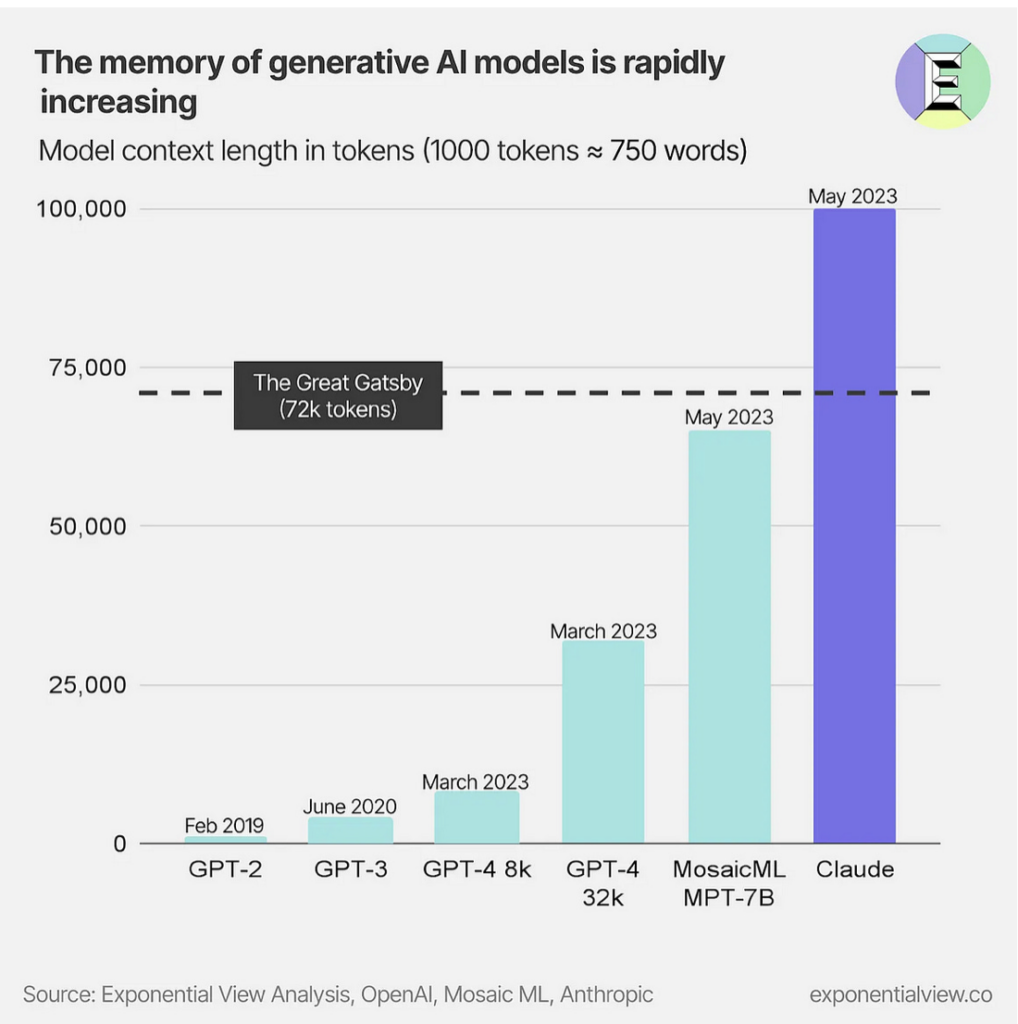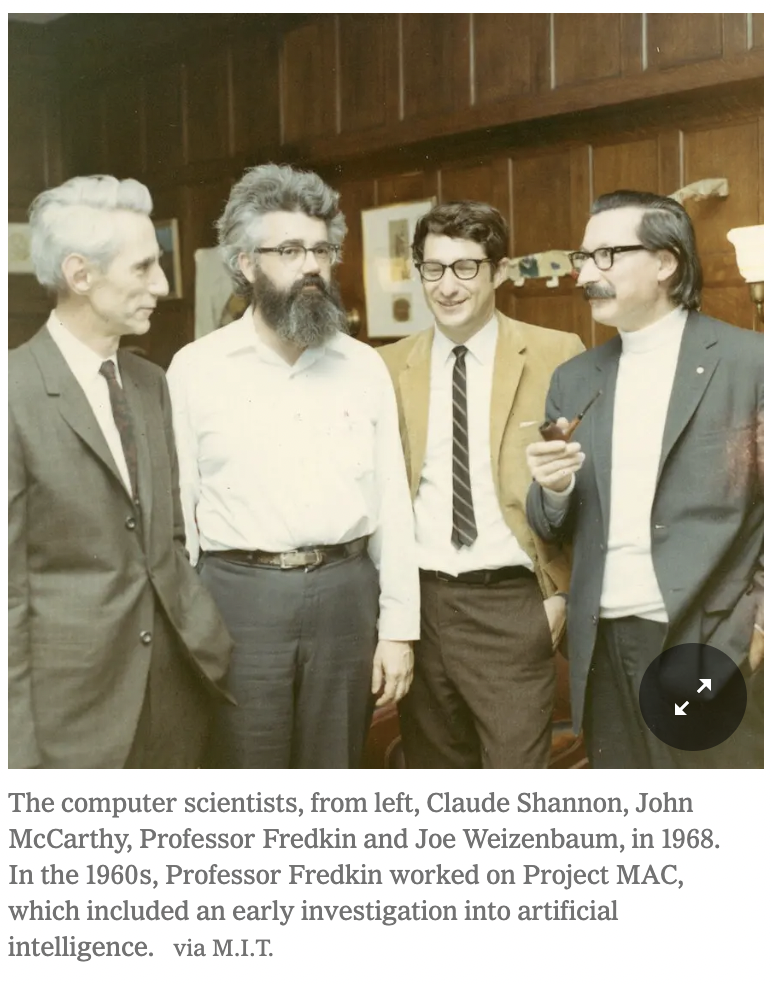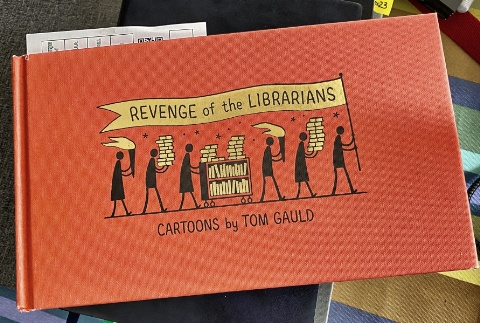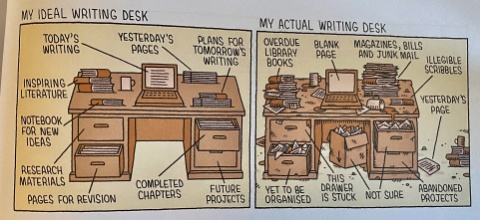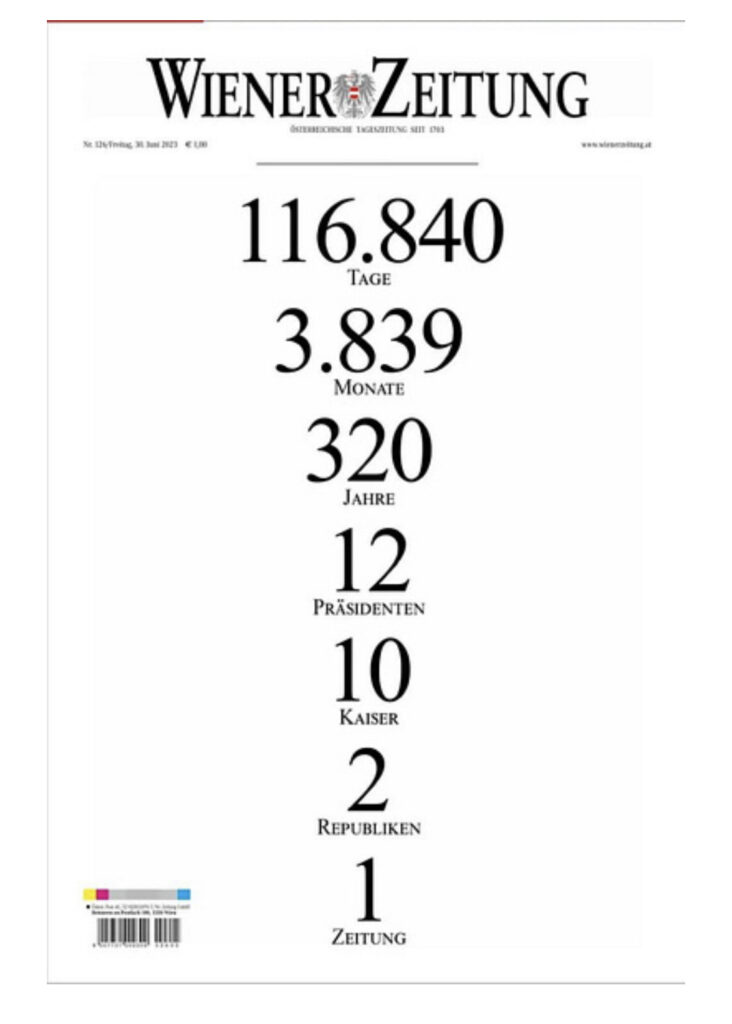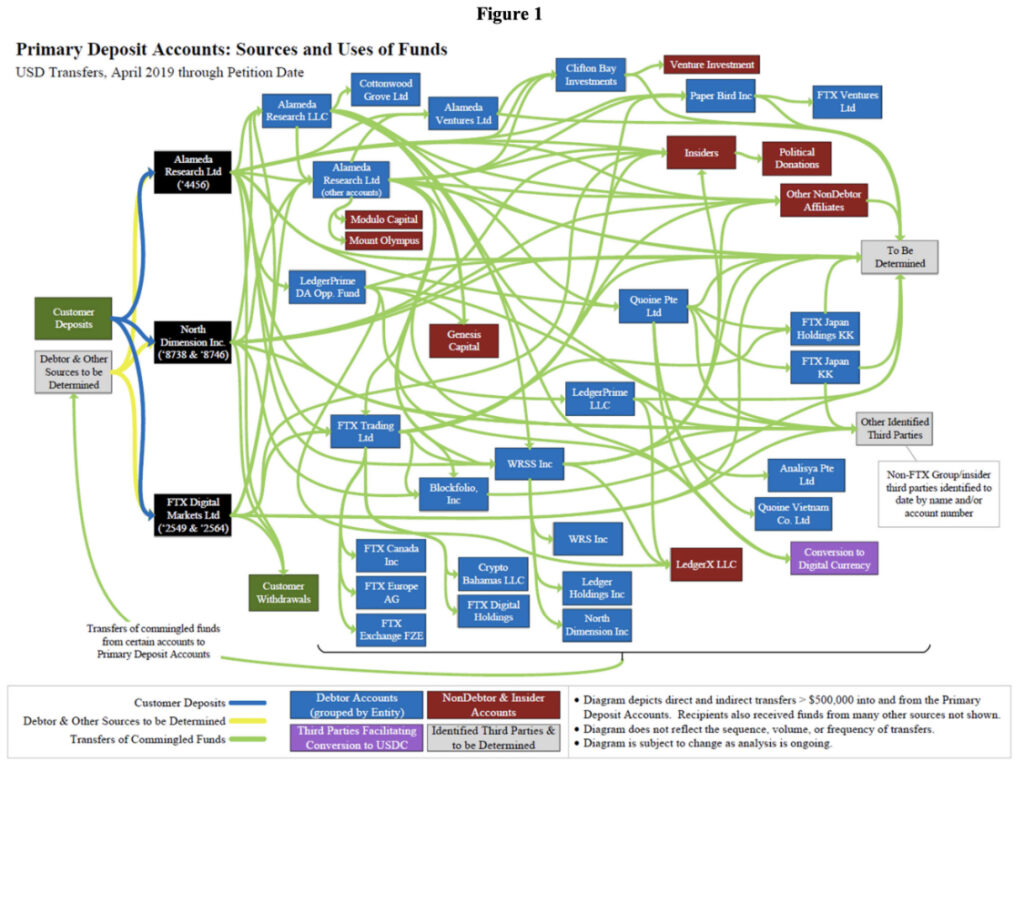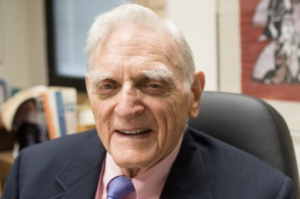A rose by any other name…
… would smell as sweet.
Quote of the Day
”While Twitter felt like a rowdy pub at chucking-out time, Threads feels like a corporate box at a concert.”
- Helen Lewis, writing about her social media experiences.
Musical alternative to the morning’s radio news
Fats Domino | Red sails in the sunset
Famous song with an interesting history. It was written by the Northern Irish songwriter Jimmy Kennedy. According to the FT’s ‘Life of a Song’ column, it came about because one evening in the mid-1930s Kennedy saw the sloop, Kitty of Coleraine, sailing off the resort of Portstewart during a magnificent sunset. As he watched, he saw the boat’s white sails take on the colour of the setting sun. The rest, as they say, is history. It was the biggest hit of the 2,000 songs Kennedy wrote during his career.
Long Read of the Day
Talking about a ‘schism’ is ahistorical
Terrific essay by Emily Bender on the way the current discourse on the supposed ‘existential risk’ posed by ‘AI’ manages to avoid the really important questions — and ignores everything we already know about existing harms of the technology.
The problem with the ‘schism’ framing is that to talk about a ‘schism’ is to talk about something that once was a whole and now is broken apart — authors that use this metaphor thus imply that such a whole once existed. But this is emphatically not a story of a community that once shared concerns and now is broken into disagreeing camps. Rather, there are two separate threads — only one of which can properly be called a body of scholarship — that are being held up as in conversation or in competition with each other. I think this forced pairing comes in part from the media trying to fit the recent AI doomer PR pushes into a broader narrative and in part from the fact that there is competition for a limited resource: policymaker attention…
This is an important and perceptive essay by one of the sharpest minds around. And it provides a welcome antidote against the fake dichotomies about ‘AI’ currently being peddled by mainstream media and the tech industry.
Howard Jacobson has a blog
He’s a very good writer but an online virgin, and is therefore new to this game.
I haven’t jumped out of an aeroplane but I doubt it would be as frightening as this.
Until today I have never digitally posted anything. I have never blogged. I have never tweeted. I have never cyber-liked or cyber-disliked or sent an emoji, though I did once try to send one back. I am a stranger to WhatsApp and neither chat nor date.
In his first post, he decided that maybe he should become a flaneur like Baudelaire, and walk the streets of the city where he lives – in his case, London:
Last week, in this spirit of being simultaneously inside myself and out of it, I took to the streets. Does that sound revolutionary? Well for me it was. ‘Stay out of your head,’ I chided myself in advance. ‘Pretend this is the party you would never go to as a boy.’ And lo, as though by miracle, as I crossed from Mortimer Street into Great Portland Street the life I had come in search of, came in search of me – a very small woman, dressed in a miniature leather jacket and flimsy polka-dot shorts, pushing a very big pram. I remembered that Dickens had noted a similar sight on one of his perambulations across London, then I reprimanded myself for letting literature nudge out life. ‘Look at the mother,’ I said. ‘Let yourself be touched by the arduousness of her life – a child to look after and she scarcely bigger than a child herself.’ Why, even at first glance, was she so affecting? And then she stopped to lean into the pram and soothe the crying baby. ‘Any more of that and I’ll be taking you home,’ she said, firmly but not without kindness. And as, with tremendous effort, she lifted the baby out to make it more comfortable, I saw that she was not a mother but a little girl, no more than eight or nine years old herself. The sister of the child? Who knew? A host of questions: was she walking the baby to give the actual mother an hour off; had the actual mother died or run away leaving this little girl with a baby to look after for the rest of her childhood; was her tiny body strong enough for the task of caring for a child; was she resentful or was she consumed with love for the occupant of the pram and delighted to be trusted with it; was this a sorrowful tale or a happy one?
Once a writer, always a writer.
My commonplace booklet
- In Friday’s edition I mused about how long it would take for someone to upload the entire Old Testament corpus into an LLM. Thanks to Sheila Hayman (Whom God Preserve), I now know that Meta has already done it for the New Testament!
- Gadgets and Gizmos That Inspired Adam Smith — Link. Hmmm…. I’m a gadget freak and no sooner had I read this than I turned out to the contents of my trouser pocket, which consisted of a tiny fountain pen, and a mechanical pencil, both of which go everywhere with me and don’t require me to wear shirts with pockets! So I’m in no position to patronise Adam Smith’s contemporaries.
Linkblog
Some things I noticed, while trying to drink from the Internet firehose.
- The Fasinatng… Fascinating History of Autocorrect Link
This Blog is also available as an email three days a week. If you think that might suit you better, why not subscribe? One email on Mondays, Wednesdays and Fridays delivered to your inbox ay 6am UK time. It’s free, and you can always unsubscribe if you conclude your inbox is full enough already!

